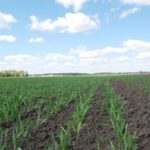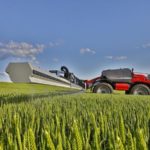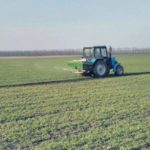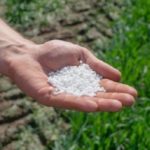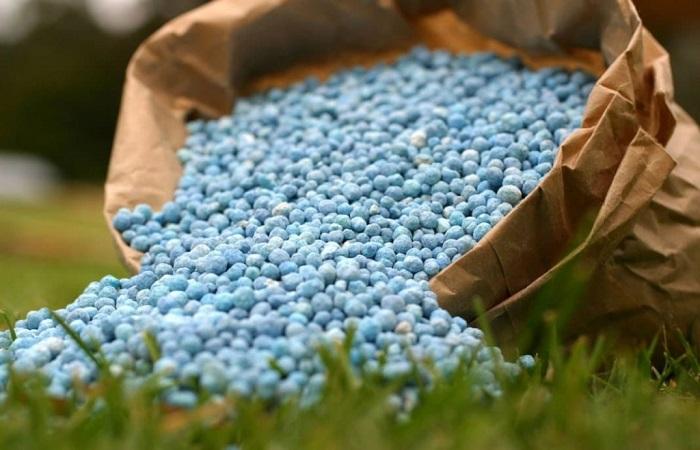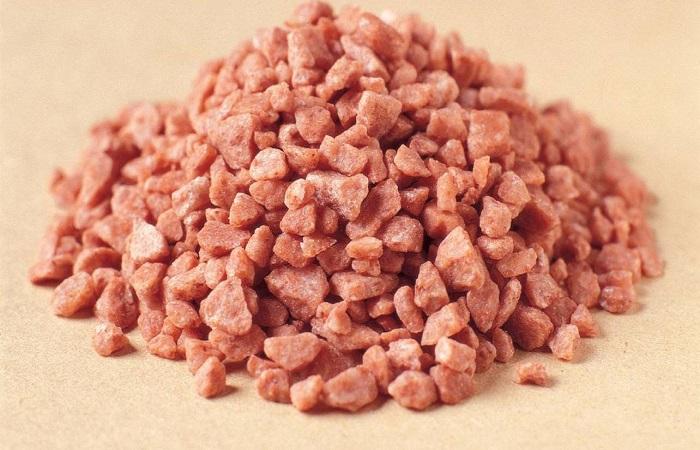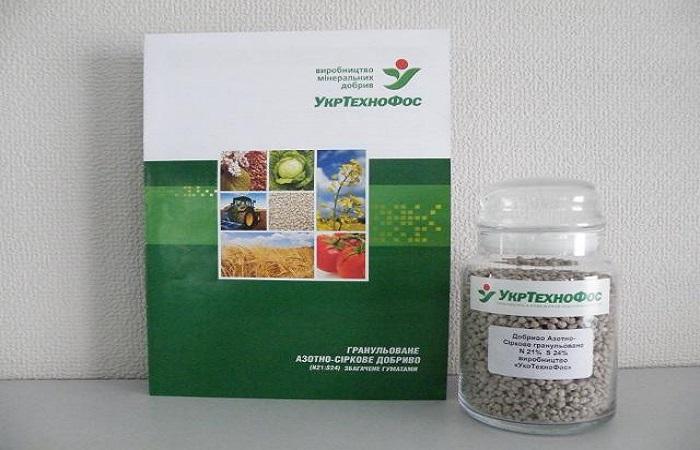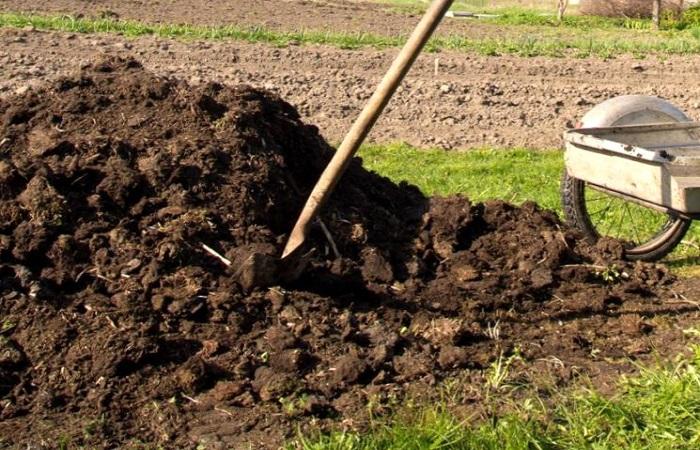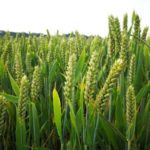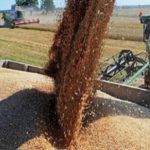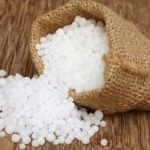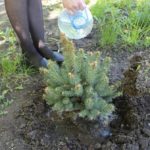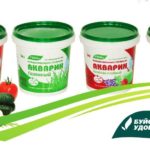The development and yield of wheat directly depend on the amount of nutrients in the soil. With a lack of nutrients, plants are stunted in growth. In addition, there is a decrease in leaf mass and number of grains. With the help of proper feeding of winter wheat in the spring, it is possible to significantly increase grain quality and yield parameters. It is important to follow the instructions for applying fertilizers.
- Types and timing of feeding
- Main features of fertilizing on frozen soil
- What substances are needed for winter wheat?
- Application rates
- What fertilizers should I choose for wheat?
- Nitrogen supplements
- Phosphorus nutrition
- Potassium nutrition
- Calcium nutrition
- Magnesium nutrition
- Sulfur nutrition
- Organic fertilizers
- Submission rules
Types and timing of feeding
The early start of the spring growing season of winter crops is accompanied by low temperatures and short daylight hours. In this situation, the process of photosynthesis does not produce the required amount of nutrients and the development of leaf blades slows down. Therefore, cereals should definitely be provided with valuable nutrients. They require nitrogen, magnesium, potassium, phosphorus.
It is important to adhere to the system of introducing nutrients:
- The first feeding is carried out in early spring. At this stage it is worth using easily digestible nitrogen substances. Ammonium nitrate is usually used for this. It is considered the most harmless type of feeding. The consumption rate should be calculated taking into account the condition of the crops and the moment the growing season begins. With good shoot development at stages 2-3 of organogenesis, it is worth adding 30% nitrogen. This helps the wheat to form powerful stems, increase tillering and stand density. If part of the crops freezes after winter, the nitrogen rate should be determined taking into account the degree of liquefaction.
- The second feeding is carried out at the 2nd stage of organogenesis. At the same time, winter wheat is at the stage of booting. The optimal dosage is selected based on the first application. The minimum amount is 50% of the total nitrogen requirement.
- The third time it is necessary to apply the remaining fertilizers. The procedure is carried out from the moment the heading begins until the grains are completely filled. At this stage, the activity of the upper leaves and the efficiency of photosynthesis increase.
Main features of fertilizing on frozen soil
For fertilizing on frozen soil, the common nitrogen preparation UAN, which is a urea-ammonium mixture, is used. The most common brands include 28 and 32. They indicate the percentage of nitrogen content.The drug contains the active substance in 3 forms - ammonium, nitrate and amide.
What substances are needed for winter wheat?
Winter wheat requires a whole range of nutrients, each of which is responsible for specific functions. It is especially important to feed cereals when sowing the same areas every year and neglecting the rules of crop rotation. In such a situation, after harvesting the soil is greatly depleted. Therefore, when planting cultivated plants, you must take care of fertilizing.
Various means are used to replenish nutrients. One of the most common drugs is saltpeter. It is also useful to combine organic and mineral fertilizers. Features of their use are presented in the table:
| Feeding group | Origin | Availability for crops | Validity | Consumption |
| Mineral | Chemical | Fast | Short | High |
| Organic | Animal-vegetable | It takes time to decompose into components | Long lasting | Short |
It is recommended to combine organic and mineral preparations taking into account the general intake of substances. At the same time, a slight lack of nutrients is better than their excess.
Application rates
The application of fertilizers when growing wheat is divided into several stages. It is necessary to start feeding crops in the fall. It is recommended to use nitrogen - no more than 30 kilograms per 1 ha.
Spring feeding of wheat includes the following stages:
- The application of nitrogen fertilizers in early spring at the 2-3 stages of organogenesis increases tillering and density by 1 hectare. This type of feeding is also called regenerative. In this case, the dose is adjusted taking into account the condition of the plants and the timing of the beginning of the restoration of vegetation. At this stage, 30-60 kilograms of active substance are required.
- The second feeding is carried out at the stage of exit into the tube. This helps improve the growth of lateral stems and increase the grain content of the ear. The dosage is adjusted taking into account the first feeding and is 50% of the total volume of nitrogen - N 60-90.
- The third feeding occurs at the stage of heading and filling of grains. At this time, the last part of nitrogen is added in a volume of N 30-60. This helps to continue the growing process of the upper leaves and increase the intensity of photosynthesis.
What fertilizers should I choose for wheat?
In order for wheat to grow and develop normally, it needs to be fed promptly and correctly.
Nitrogen supplements
Nitrogen has unique properties and benefits cereal plants. The substance ensures the growth of the root system and above-ground fragments of crops. In addition, it affects the growing season of the cereal. Nitrogen is primarily required by wheat during germination and subsequent development.
At the same time, it is impossible to apply too much nitrogen preparations in the fall. This reduces tolerance to winter frosts and increases susceptibility to pests and diseases. If winter cereals lack nitrogen, they lag behind in development and become pale green in color. In this case, the stems become thin and the leaves become small. Lack of nitrogen during the formation of spikelets leads to a decrease in grain fullness.
Phosphorus nutrition
Phosphorus plays an important role in the process of plant photosynthesis. It is present in accumulator compounds that affect the respiration and growth energy of crops. Phosphorus can reduce excess nitrogen and increase its efficiency.
This element affects the development of microorganisms in the soil structure and significantly increases their activity at the biological level. This substance gives the plant energy at all stages of development and on different types of soil.
Phosphorus should be added immediately - when digging and planting seeds. It begins to act already at the stage of sprouts pipping. This substance is of particular importance at the stage of tube formation.
This element helps grow roots and affects the smooth emergence of sprouts. It helps protect seedlings from severe frosts by accumulating a sufficient amount of protective components - in particular, sugars. The substance provides protection against diseases and lodging, and has a beneficial effect on the density and density of spikelets.
Potassium nutrition
Potassium is very important for the normal development of wheat. It helps strengthen the immune system and increase frost resistance in harsh weather. Potassium is responsible for nutrition and the formation of the root system, and also helps to increase the mass of grains during ripening.
Calcium nutrition
Calcium is responsible for the growth of any plant. It significantly increases the resistance of cereals to the influence of bacteria and fungi.Calcium deficiency affects the condition of the root system, preventing its growth. As a result, it cannot be normally saturated with water and useful elements. As a crop grows, its need for calcium increases.
Magnesium nutrition
Wheat requires magnesium for protein and carbohydrate metabolism, as well as for proper respiration. Saturation of cells with oxygen, in turn, has a beneficial effect on the development of the culture. When there is a lack of magnesium, wheat foliage turns yellow. To compensate for the deficiency of this element, foliar feeding is carried out. Magnesium sulfate should be added at the stage of completion of tube formation and at the moment the main tillering begins.
Sulfur nutrition
Sulfur is responsible for protein metabolism. With a deficiency of this element, a slowdown in cultural development occurs. It is recommended to add sulfur additives when digging up the soil - before planting. Sulfur is absorbed throughout the entire growing season.
Organic fertilizers
To obtain the desired effect, organic matter should be added to the soil in the fall. Thanks to this, in the spring it will be possible to saturate the soil with nutrients. Chicken droppings, manure, and humus are used as fertilizers. It is worth using 25-30 tons of substances per 1 hectare.
Submission rules
To properly feed wheat, you should follow these recommendations:
- use granules with a diameter of no more than 5 millimeters;
- Feeding humidity parameters should be 1.5-15%;
- To evenly distribute the mixtures, you need to use special equipment.
The yield of winter wheat is determined by the quality and quantity of nutrients. This is why it is so important to follow the recommendations for applying fertilizers.




